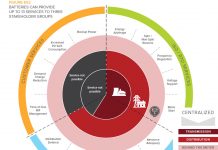Tom Konrad CFA
 Since Maxwell Technologies(NASD:MXWL) lowered guidance in their first quarter conference call at the end of April, the stock has fallen by 58%, and is currently trading at $6.65 compared to $15.80 before the earnings call.
Since Maxwell Technologies(NASD:MXWL) lowered guidance in their first quarter conference call at the end of April, the stock has fallen by 58%, and is currently trading at $6.65 compared to $15.80 before the earnings call.
This fall has been considerably more dramatic than the lowering of analysts’ price targets. These now stand at an average of $16.40, down about 20% from two months ago.
Insiders have been actively buying the stock since it hit $10, and continue to do so. Such active buying reflects conviction that the stock is trading well below fair value.
With both analysts and insiders signalling that the stock is a bargain at current levels, who is selling? Two recent SEC filings tell us. On May 10th and 11th, two major fund managers, Lord, Abbett & Co. LLC, and FMR, LLC (Fidelity) reported updated holdings of Maxwell stock. They were previously the two largest institutional shareholders, jointly owning over 12% of Maxwell stock (see table.)
| Top Institutional Holders, March 31 | ||||
| Holder | Shares | % Out | Value* | Reported |
| LORD ABBETT & CO | 1,974,722 | 6.78% | $36196654 | 03/31/12 |
| FMR LLC | 1,561,900 | 5.36% | $28629627 | 03/31/12 |
| VANGUARD GROUP, INC. (THE) | 1374755 | 4.72 | $25199259 | 03/31/12 |
| RIVERBRIDGE PARTNERS LLC | 1279913 | 4.39 | $23460805 | 03/31/12 |
| WELLS FARGO & COMPANY | 916824 | 3.15 | $16805383 | 03/31/12 |
Now, Lord, Abbett & Co. owns only 1.92% of Maxwell’s shares, and Fidelity owns only 0.24%. Their current combined holdings amount to only 620 thousand shares, down from 3,536 thousand, meaning they have sold almost three million shares, or 11% of the 27 million traded since the stock started to fall.
That level of institutional selling goes a long way to explain the stock’s decline beyond what seems to be warranted by the change in the news.
The good news is, there seems to be little more such institutional stock to sell. Fidelity has sold completely, and Lord, Abbett & Co have only half a million shares left. The new largest institutional holder is the Vanguard group, and Vanguard’s index funds are not actively managed, and so would not be selling because of an earnings announcement.
Other institutions may be selling as well, but at least the two largest are nearly done. The previous top mutual fund holders are shown below:
| Top Mutual Fund Holders |
|---|
|
The most likely sellers are growth funds, shown in red. Index funds (blue) will be holding, while value funds (green) will likely buy or hold at current prices. Since the two largest potential sellers seem to have reported selling nearly all their holdings, the only major potential seller left to report is the Wells Fargo fund, which held less than half a million shares, many of which would also have already been sold if the fund’s manager had decided to sell in response to the lowered guidance.
Note that Lord Abbett sold more stock than the 4% previously owned by the Lord Abbett Developing Growth fund (LAGWX), so the manager’s remaining shares could easily be held by non-growth mutual funds, hence may not be sold at all.
Conclusion
It appears that institutional selling pressure is mostly over, allowing new buyers attracted by the much better valuation to begin to move the stock up.
The real gains, of course, will depend on Maxwell itself. If management does not deliver on their new, lowered guidance, then the large growth fund sellers will have been right to sell.
Those funds’ recent track records should give current Maxwell shareholders some confidence. In 2011, Fidelity Growth Strategies was down 8.95%, while the Lord Abbett Developing Growth fund (LAGWX) was down 1.66%. Meanwhile, the passive iShares S&P MidCap 400 Growth Index Fund (NYSE:IJK) was up by a large 30.44%. So far this year, the two mutual funds have beaten IJK by 5% and 4%, respectively, but this is nothing compared to the 39% and 32% underperformance in 2011.
Those are the kind of track records I prefer to trade against.
Disclosure: Long MXWL
This article was first published on the author’s Forbes.com blog, Green Stocks.
DISCLAIMER: Past performance is not a guarantee or a reliable indicator of future results. This article contains the current opinions of the author and such opinions are subject to change without notice. This article has been distributed for informational purposes only. Forecasts, estimates, and certain information contained herein should not be considered as investment advice or a recommendation of any particular security, strategy or investment product. Information contained herein has been obtained from sources believed to be reliable, but not guaranteed.







